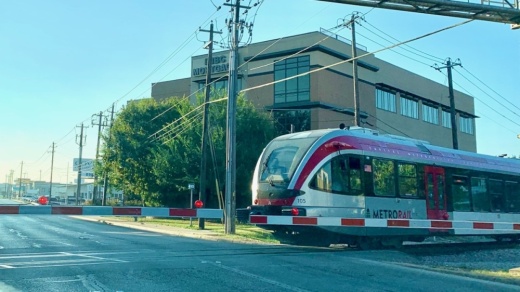The joint powers agreement involves three Project Connect stakeholders: the city of Austin, Capital Metro, and the Austin Transit Partnership, or ATP. Sam Sargent, ATP director of strategy, said last week that the document represents the "rules of the rails" for the $7.1 billion transit expansion.
The three entities gathered last week at the Austin Convention Center to hammer out the final agreement but were forced to delay due to technical difficulties. Council took up its approval of the document, and several members' revisions to the plan, Nov. 4.
In addition to detailing the roles of the ATP, Capital Metro and city officials and staff, portions of the document also tie to equity, land use and community engagement as the expansive transit project moves ahead. Several edits to the agreement approved by council this week also reflect commentary from residents and mobility groups that had previously expressed reservations.
One such change brought forward by Mayor Steve Adler concerned how the ATP, which oversees Project Connect's implementation, chooses a director and CEO. Adler's amendment to the joint powers agreement allows the ATP to select a leader with additional guidance on community engagement.
"In drafting this language, community advocates helped with words to ensure a deliberative process around the appointment of the executive director, and one in which we can all be confident that all voices will be actively involved," Adler said in a Nov. 2 council message board post.
Additional discussion at council's Nov. 4 session centered around future planning as the Project Connect process rolls on, and how the three involved entities will work through issues related to land use and equitable transit-oriented development.
Amendments and related discussions got into a detailed level at times, with several council members expressing uncertainty over what guidelines were being proposed. District 3 Council Member Pio Renteria, a Capital Metro director, also voiced concern over perceived mistrust and getting bogged down in tweaks given the desire for friendly cooperation between the city and transit bodies moving forward, an opinion shared by District 6 Council Member Mackenzie Kelly.
"Bad communication can create obstacles, and I don't want to give the wrong impression to our other partners involved," she said. "The joint powers agreement is here so that we can all work together cohesively, and I’m looking forward to that.”
Additional amendments to the guiding agreement approved Nov. 4 include submissions from District 9 Council Member Kathie Tovo covering preservation along future rail lines. One measure called for mitigation of construction around "parkland and historic squares," and another could see stakeholders work to protect the Waller Creek Boathouse. The relatively new structure on Lady Bird Lake is expected to be wiped out by Project Connect's Blue Line bridge, although Tovo said pieces of the structure prized by some local rowing enthusiasts could be saved and reconstructed.
“This just directs our manager and our city staff to continue to work on assessing appropriate spaces, and more importantly, to provide us with an update on what some of those possibilities are so that we can really be proactive about that process," she said.
In the end, council unanimously signed off on moving the amended joint powers agreement forward in a 10-0 vote with District 4 Council Member Greg Casar off the dais.
Benton Graham contributed to this report.





